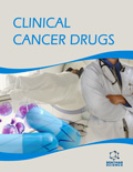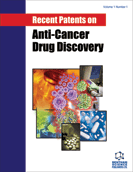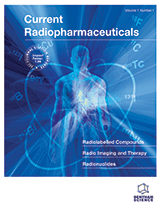Abstract
Background: Non-small-cell lung cancer (NSCLC) is the most common type of lung cancer, which is the leading cause of death worldwide with the majority of patients presenting with advanced disease at the time of diagnosis.
Objective: In this review, the emergence of erlotinib as a seed for the treatment of NSCLC has been discussed and how it is gaining limelight as one of the most suitable drugs for this indication. The approval status in different regions and recommendation data from Health Technology Assessment (HTA) agencies like National Institute for Care and Excellence (NICE), UK and Wales and Scottish Medical Consortium (SMC), Scotland have also been collected in this study.
Method: For carrying out the review, literature was searched on various databases including PubMed, Clinicaltrial.gov, various HTA databases, EMBASE, Google Scholar, United States Food and Drugs Administration (USFDA) and various other online databases. Information from these sources was compared and analyzed as per the requirement of the objective.
Results: From the literature obtained after searching various databases, it was observed that Erlotinib (Tarceva) is one of the drugs which acts on EGFR and was approved (2004) from USFDA for treating locally advanced or metastatic NSCLC, as second or third line treatment after the failure of chemotherapy regimen. Different Health Technology Assessment (HTA) agencies have also assessed erlotinib for various indications and have given guidance for its use.
Conclusion: On the basis of available literature and data on clinical studies, it can be concluded that erlotinib can be the better option for treatment of NSCLC and effective against different lines of treatment and in maintenance as well.
Keywords: Erlotinib, non-small cell lung cancer, clinical trials, health technology assessment agencies, epidermal growth factor receptor, EGFR.
Graphical Abstract
Clinical Cancer Drugs
Title:Erlotinib in Non-Small Cell Lung Cancer: From a thought to Necessity
Volume: 5
Author(s): Parijat Pandey and Harish Dureja*
Affiliation:
- Department of Pharmaceutical Sciences, Maharshi Dayanand University, Rohtak, 124001,India
Keywords: Erlotinib, non-small cell lung cancer, clinical trials, health technology assessment agencies, epidermal growth factor receptor, EGFR.
Abstract: Background: Non-small-cell lung cancer (NSCLC) is the most common type of lung cancer, which is the leading cause of death worldwide with the majority of patients presenting with advanced disease at the time of diagnosis.
Objective: In this review, the emergence of erlotinib as a seed for the treatment of NSCLC has been discussed and how it is gaining limelight as one of the most suitable drugs for this indication. The approval status in different regions and recommendation data from Health Technology Assessment (HTA) agencies like National Institute for Care and Excellence (NICE), UK and Wales and Scottish Medical Consortium (SMC), Scotland have also been collected in this study.
Method: For carrying out the review, literature was searched on various databases including PubMed, Clinicaltrial.gov, various HTA databases, EMBASE, Google Scholar, United States Food and Drugs Administration (USFDA) and various other online databases. Information from these sources was compared and analyzed as per the requirement of the objective.
Results: From the literature obtained after searching various databases, it was observed that Erlotinib (Tarceva) is one of the drugs which acts on EGFR and was approved (2004) from USFDA for treating locally advanced or metastatic NSCLC, as second or third line treatment after the failure of chemotherapy regimen. Different Health Technology Assessment (HTA) agencies have also assessed erlotinib for various indications and have given guidance for its use.
Conclusion: On the basis of available literature and data on clinical studies, it can be concluded that erlotinib can be the better option for treatment of NSCLC and effective against different lines of treatment and in maintenance as well.
Export Options
About this article
Cite this article as:
Pandey Parijat and Dureja Harish *, Erlotinib in Non-Small Cell Lung Cancer: From a thought to Necessity, Clinical Cancer Drugs 2018; 5 (2) . https://dx.doi.org/10.2174/2212697X06666190102110412
| DOI https://dx.doi.org/10.2174/2212697X06666190102110412 |
Print ISSN 2212-697X |
| Publisher Name Bentham Science Publisher |
Online ISSN 2212-6988 |
 39
39 1
1
- Author Guidelines
- Bentham Author Support Services (BASS)
- Graphical Abstracts
- Fabricating and Stating False Information
- Research Misconduct
- Post Publication Discussions and Corrections
- Publishing Ethics and Rectitude
- Increase Visibility of Your Article
- Archiving Policies
- Peer Review Workflow
- Order Your Article Before Print
- Promote Your Article
- Manuscript Transfer Facility
- Editorial Policies
- Allegations from Whistleblowers
- Announcements
Related Articles
-
Cancer Proteomics: New Horizons and Insights into Therapeutic Applications
Current Proteomics Recent Advances on Dark and Light-Activated Cytotoxity of Imidazole- Containing Ruthenium Complexes
Mini-Reviews in Medicinal Chemistry Going 3D – Cell Culture Approaches for Stem Cell Research and Therapy
Current Tissue Engineering (Discontinued) Recent Approaches in Chemoprevention of Prostate Cancer
Current Cancer Drug Targets Opportunities and Challenges in Nano-structure Mediated Drug Delivery: Where Do We Stand?
Current Nanomedicine Recent Advances and Developments in Treatment Strategies Against Pancreatic Cancer
Current Clinical Pharmacology Marine Derived Bioactive Compounds for Breast and Prostate Cancer Treatment: A Review
Current Bioactive Compounds Deubiquitinating Enzymes as Therapeutic Targets in Cancer
Current Pharmaceutical Design Advances in Cancer Stem Cell Therapy: Targets and Treatments
Recent Patents on Regenerative Medicine A New Strategy to Target Acute Myeloid Leukemia Stem and Progenitor Cells Using Chidamide, a Histone Deacetylase Inhibitor
Current Cancer Drug Targets The Function and Regulation of BMP6 in Various Kinds of Stem Cells
Current Pharmaceutical Design Role of Graphene Nano-Composites in Cancer Therapy: Theranostic Applications, Metabolic Fate and Toxicity Issues
Current Drug Metabolism Impact of Genetic Variability in Nicotinic Acetylcholine Receptors on Nicotine Addiction and Smoking Cessation Treatment
Current Medicinal Chemistry Cancer-Homing Toxins
Current Pharmaceutical Design Corrigendum to: A Review on Lung Cancer Diagnosis Using Data Mining Algorithms
Current Medical Imaging Ginkgo biloba Extract in Vascular Protection: Molecular Mechanisms and Clinical Applications
Current Vascular Pharmacology Therapeutic Strategies to Target TGF-β in the Treatment of Bone Metastases
Current Pharmaceutical Biotechnology Bisphosphonate Therapy in the Treatment of Multiple Myeloma
Current Pharmaceutical Design A Concept of Homeostatic Inflammation Provided by Endogenous TLR4 Agonists that Function Before and After Danger Signal for Metastasis
Anti-Inflammatory & Anti-Allergy Agents in Medicinal Chemistry Tyrosine Kinase Inhibitor as a new Therapy for Ischemic Stroke and other Neurologic Diseases: is there any Hope for a Better Outcome?
Current Neuropharmacology





















